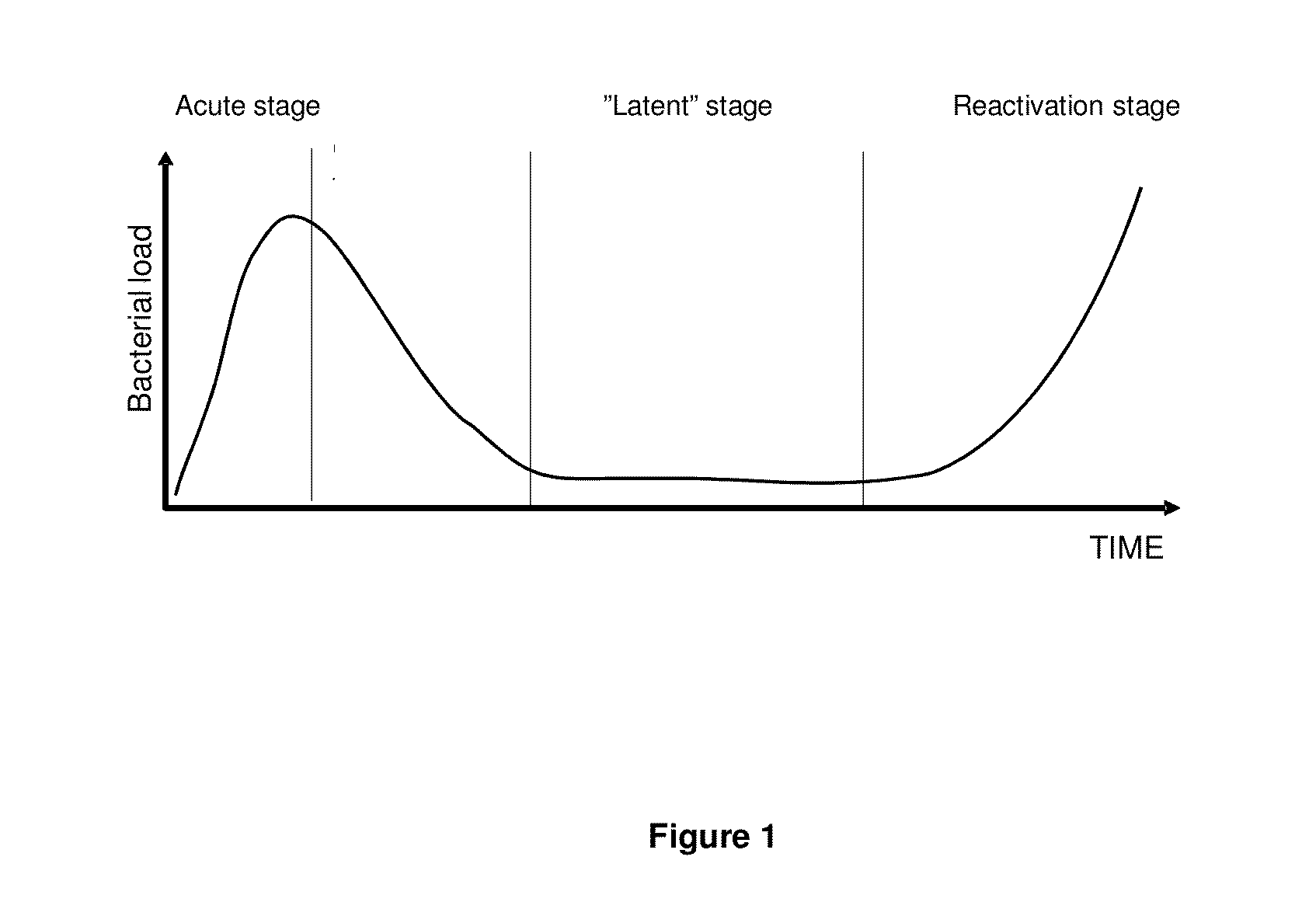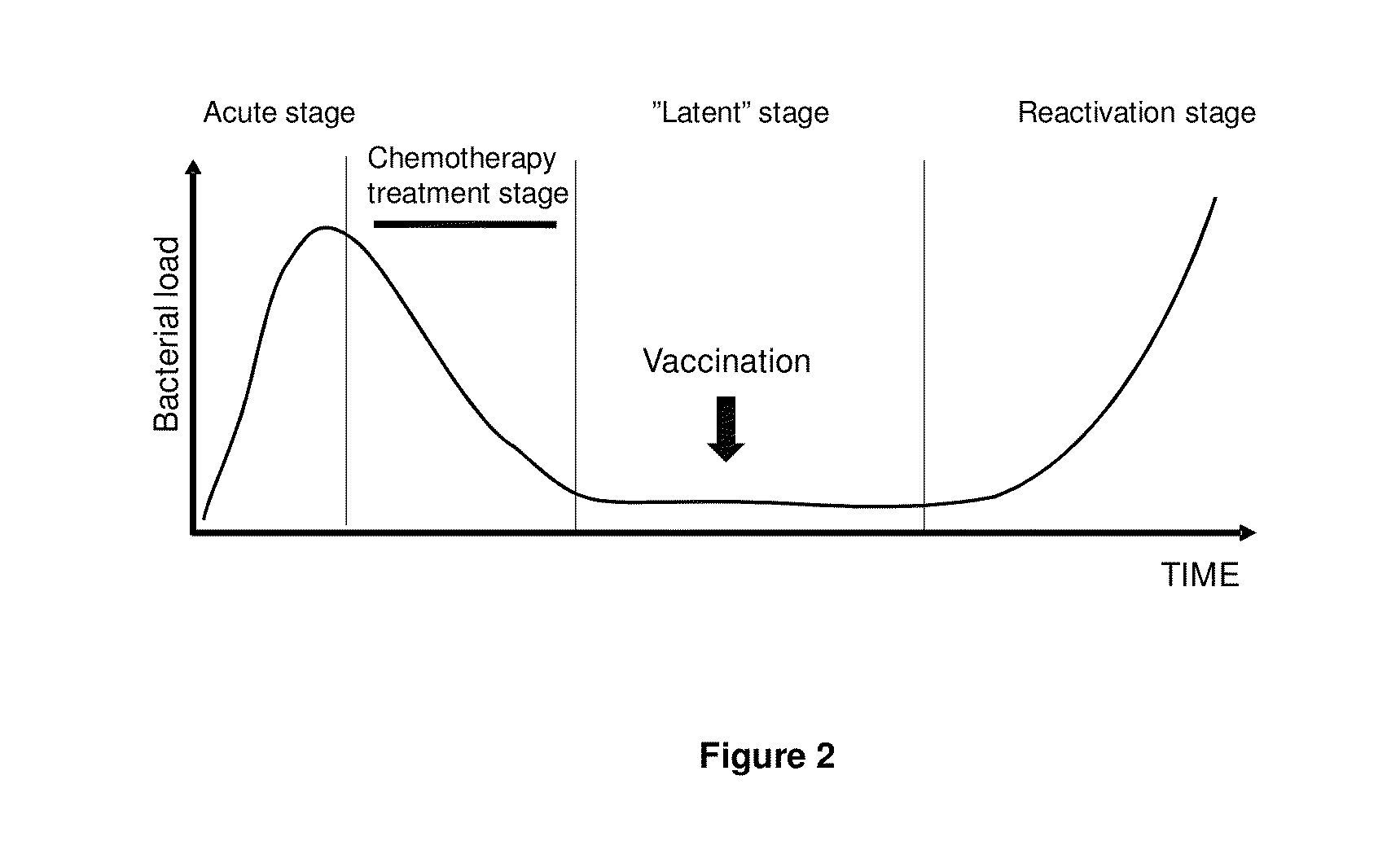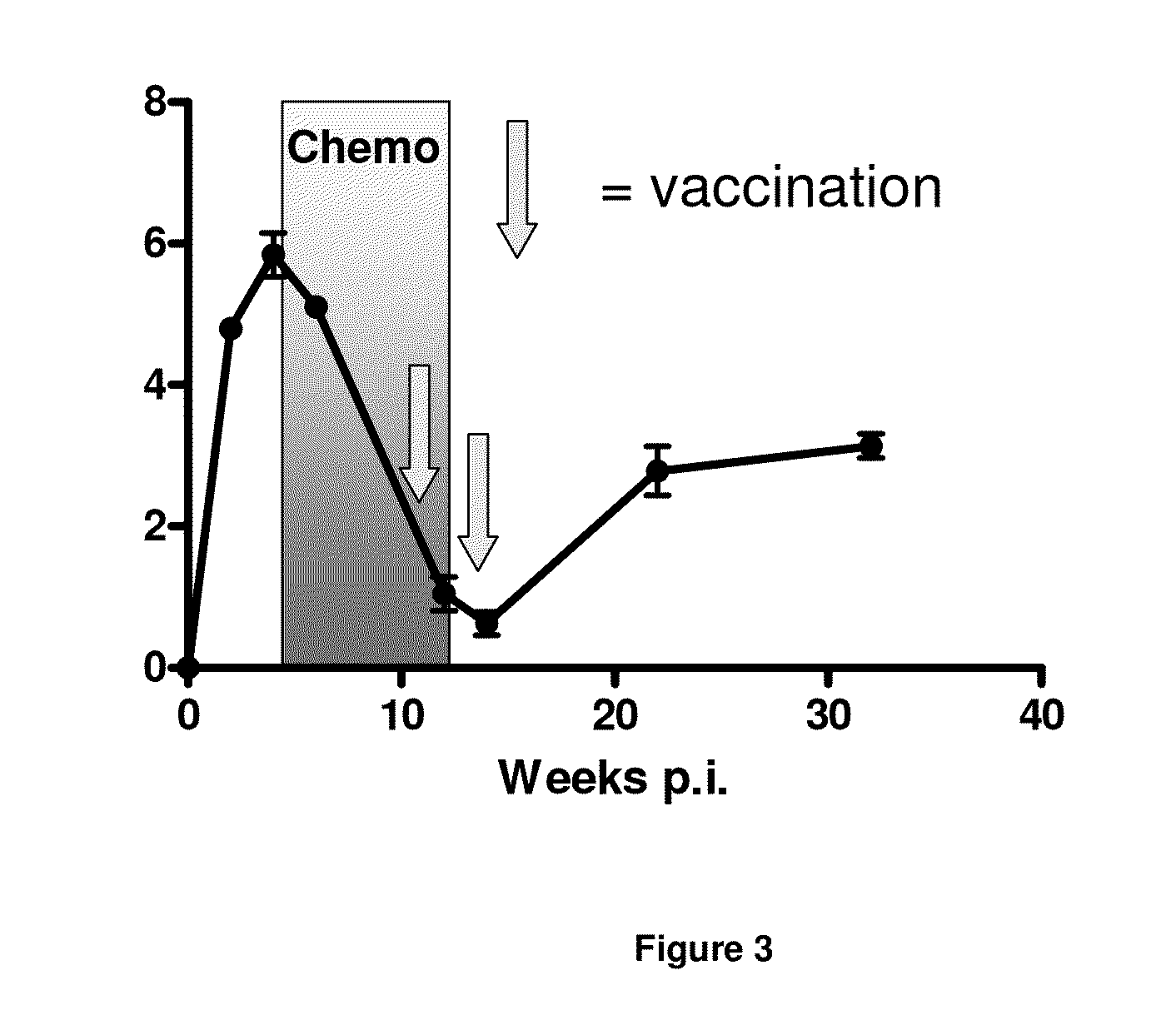Tuberculosis tb vaccine to prevent reactivation
a technology of tb vaccine and reactivation, applied in the field of vaccines, can solve the problems of significant global health problem, unable to control the tb epidemic, and unable to prove fatality
- Summary
- Abstract
- Description
- Claims
- Application Information
AI Technical Summary
Benefits of technology
Problems solved by technology
Method used
Image
Examples
example 1
Murine TB Model for Vaccination
[0101]The Cornell model has widely been used as a murine model for the study of latent TB. This model has been adapted in our laboratory for the testing of the ability of vaccine candidates to prevent reactivation. Mice are initially aerosolly infected with virulent M. tb. and at week 6 post infection antibiotic treatment is initiated to reduce the bacterial load. This is to mimic the latent stage of a human infection which does not occur spontaneously in mice. During this latent stage (a stage with continuous low bacterial numbers) the mice are being immunized twice and the ability to prevent reactivation by the vaccine is determined by culturing the spleen and lungs for live M. tb. 20 weeks after the last immunization. The long timespan of the experiments is necessary to allow sufficient time for reactivation of the disease which is a prerequisite for readout of vaccine efficacy (FIG. 3).
example 2
Postexposure Vaccine Induced Protection by ESAT6 but not Ag85
[0102]ESAT-6 and Ag85B have proven to be protective in prophylactic vaccination both as single components and also as the fusion molecule Ag85B-ESAT6 (H1). However, when these antigens were tested in the postexposure model (as described above in example 1) only ESAT6 has a protective effect and control bacteria growth during the reactivation phase (FIG. 4). Furthermore, as seen in FIG. 4B ESAT6 protection against reactivation manifests itself as early as W18 post infection and this protection was maintained throughout the course of the experiment (up until week 40 post infection). This is in contrast to what is observed when Ag85B is used as a post exposure vaccine (FIGS. 4C and D), where there is no significant decrease in bacterial load compared to the control. In addition, we evaluated the H1 fusion protein which is composed of the TB antigens Ag85B and ESAT-6 which has shown promising efficacy in a prophylactic setting...
example 3
Post Exposure Vaccine Induced Protection by ESAT6 Peptide Mix
[0103]As shown in the examples above, the ESAT-6 molecule is very active when given postexposure resulting in a decrease in bacterial load compared to the control group and also compared to Ag85B. Furthermore we have shown that ESAT-6 given as a pool of overlapping peptides instead of a recombinant protein also lead to a better protection against reactivation compared to both the control group and Ag85B demonstrating the strong activity of ESAT6, and ability to function as a post exposure vaccine (FIG. 4D).
Overlapping ESAT-6 peptides (P1-P13) used for protection experiment:
P1(SEQ ID NO. 19)MTEQQWNFAGIEAAAP2(SEQ ID NO. 20)NFAGIEAAASAIQGNP3(SEQ ID NO. 21)ASAIQGNVTSIHSLLP4(SEQ ID NO. 22)NVTSIHSLLDEGKQSP5(SEQ ID NO. 23)SLLDEGKQSLTKLAAP6(SEQ ID NO. 24)KQSLTKLAAAWGGSGP7(SEQ ID NO. 25)AAWGGSGSEAYQGVQP8(SEQ ID NO. 26)GSEAYQGVQQKWDATP9(SEQ ID NO. 27)QQKWDATATELNNALP10(SEQ ID NO. 28)TATELNNALQNLARTP11(SEQ ID NO. 29)ALQNLARTISEAGQAP1...
PUM
| Property | Measurement | Unit |
|---|---|---|
| concentration | aaaaa | aaaaa |
| diameter | aaaaa | aaaaa |
| size | aaaaa | aaaaa |
Abstract
Description
Claims
Application Information
 Login to View More
Login to View More - R&D
- Intellectual Property
- Life Sciences
- Materials
- Tech Scout
- Unparalleled Data Quality
- Higher Quality Content
- 60% Fewer Hallucinations
Browse by: Latest US Patents, China's latest patents, Technical Efficacy Thesaurus, Application Domain, Technology Topic, Popular Technical Reports.
© 2025 PatSnap. All rights reserved.Legal|Privacy policy|Modern Slavery Act Transparency Statement|Sitemap|About US| Contact US: help@patsnap.com



